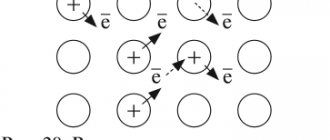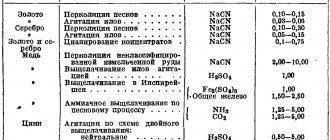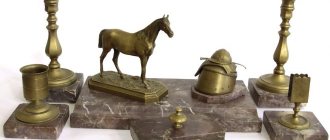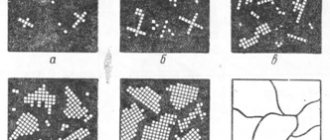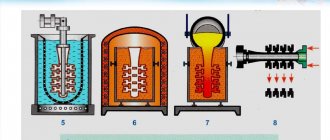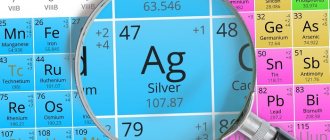- Reports and messages
- Geography
- Metal casting
Metal, as many people know, is capable of taking the form that a person offers it.
This fact was noticed back in ancient times. The ability to use iron to melt various figures was made possible by meteorites. Autumn meteorite iron is soft and easy to work, so the basics of casting have been studied for a very long time. In Russia, some of the most honorable residents are engaged in metal casting. Thus, such grandiose structures as the “Tsar Bell” and “Tsar Cannon” were attributed to this craft. Both monuments, despite their names, were never involved in military affairs.
Metal suitable for casting:
The most important property for a metal that must be present is fluidity. From one container to the next, the molten metal should flow easily, filling the entire space. If the metal does not have this property, then it will be much more difficult for craftsmen to cope with it. It simply will not have time to fill all the gaps in the form and will freeze. One of the most “convenient” metals is cast iron. This alloy has ideal fluidity.
Start:
First, you need to melt the cast iron billets in special furnaces. If a single mold is required, then the alloy is poured into it using a special ladle. If a large volume of figures is needed, then a tape is used for this, which automatically advances. After the process, grinding machines are used to remove scale.
Injection molding:
Firstly, to implement this casting method, special molds are needed. Secondly, injection equipment will be needed. One of the main advantages of the method is increased productivity. The quantity of goods consumed is much less than when using conventional equipment. The complexity of the method lies in the fact that during the separation of the product itself from the figure, technical injury is possible. And another disadvantage is that you cannot create products with thin walls. The reason is that a large layer will not be able to harden evenly.
Option No. 2
Metal casting is not a simple, but very interesting process. Its essence is to pour molten metal into special molds. As the metal cools, it hardens into the shape of the finished product.
Any metal can be melted and used for casting, but not all metals have the same casting properties. These properties directly depend on the structure of the metal and its chemical composition.
Basic casting properties of metals.
Fluidity is the ability of liquid metal to fill a casting mold and reproduce its contours and surface
Crystallization is the transition of a metal from a liquid to a solid state, with the formation of a structure. This process directly depends on the shape, pouring temperature and metal structure.
Shrinkage. The property of metal is that after cooling and solidifying, it reduces its size and volume.
There are the following types of casting:
One of the most ancient methods is casting into the ground. It is considered a very labor-intensive, but at the same time cheap method. A special wooden model of the future casting and a molding mixture that contains earth are made. Molten metal is poured into the finished casting mold. The cooled workpiece is separated from the mold and polished.
Chill casting. This method consists of pouring metal into a special mold, where it cools quickly enough and you can get a finished product in a short time. The casting mold is called a chill mold, and consists of two parts that are connected by a core. This method is convenient to use for metals with high fluidity.
Injection molding. The casting mold is filled with metal using a piston or under high air pressure. This method makes it possible to produce fairly accurate products that require a minimum of further grinding.
Static fill. Molten metal is poured into a stationary mold and remains there until it hardens completely.
Nowadays, metal casting has become an automated process and is widely used in production. Casting is used for the manufacture of both large and small parts, with both simple and complex product shapes. This process is quite popular due to the possibility of its comprehensive application and use in mass production.
Areas of use
The technological process of metal casting is in demand, since its use makes it possible to produce a variety of high-quality products without resorting to bulky equipment and a huge number of workers.
This production method is used to create and produce various metal products, which, in turn, are widely used in the following industries:
- automotive;
- aviation;
- mechanical engineering;
- electrical engineering;
- medical (in particular, dental and orthopedic);
- jewelry, etc.
In the modern metal industry market, this production technology is in high demand. Moreover, metal casting is one of the top ten best technologies in the world, the most effective and most used.
Report on the topic Metal casting in physics
Due to their properties, metals are in demand in industry. In order to reduce the oxidation process, they are used in the form of alloys with the addition of elements that give them additional properties: ductility, the desired structure, weight, density, durability: antimony, magnesium, sulfur, phosphorus, chromium, nickel, vanadium, aluminum, silicon. The production uses mainly cast iron alloy, consisting of iron with carbon of more than 2.14%, and steel, which contains iron of at least 45% and carbon up to 2.14%. The different percentages of the alloy composition are determined by the necessary properties of the resulting parts.
Used in:
- automotive industry,
- mechanical and instrument engineering,
- dentistry.
Manufacturing of parts by casting:
- Static, in which molten metal fills a fixed mold. When cooled it hardens and comes out. The result is castings of the simplest configuration.
- In metal molds (chill);
- Die casting,
- In shell forms,
- In lost wax models.
Chill casting.
The technological process consists of pouring metal at its melting temperature into a chill mold without forced pressure. The form consists of two parts, which are connected by locks. The internal cavity of the chill mold is cleaned and covered with a layer of fire-resistant paint to protect the internal surface from contact with melts. At the end of the process, in order to remove the finished product, the mold is cooled either naturally or forcefully. All structural elements are cast iron or steel.
Advantages of the method:
- stable characteristics of casting properties.
- complex product configurations are available.
- the real creation of an automated process due to the rare replacement of the die. No time is wasted on surgery.
- fairly environmentally friendly production.
Flaws:
- Cooling speed is not suitable for all manufactured parts.
- It is beneficial to use the process only for large volumes of manufactured products; a cast iron chill mold produces 20 large and 400 small-sized products per year.
Die casting.
The principle of the process is the formation of a casting under pressure in the range of 7 – 700 MPa. The press piston moves the hot alloy into the mold cavity. The castings are then solidified and ejected. Parts are obtained with characteristics close to the specified values.
Advantages of the method:
- Large output of products per unit of time.
- Reducing the cost of production due to long-term use of one mold. The spent parts of the structure are melted down. The result is work without waste.
Flaws:
- It is impossible to make products of complex design; when removed from the working chamber, they will become deformed.
- Inability to make large-size castings.
Lost wax casting.
The technological process uses disposable forms made of ceramics or non-metals paraffin and stearin. The chill mold is made according to a model that is dissolved or burned out.
The mold is heated to a high temperature and filled with alloy. At the end of the operation, the finished parts are knocked out with a special pusher.
Advantages:
- Production of products from any alloys, different sizes, with specified accuracy.
- Small amount of metal loss, reduced material consumption.
- Used in small industries.
Flaws:
- The need for manual labor.
- Variety of materials used.
Shell mold casting.
Principle of the method:
A prepared mixture of various elements is applied to a heated cast-iron model at a temperature of 230-315 degrees.
The elements are sintered and a shape is obtained, which is released from the model by a special pusher.
The shells are either clamped or glued together for use together. Can be used in a single version.
Advantages of the method:
- Reducing labor costs.
- You can reduce the costs of materials and metal.
- A small percentage of defective output.
Flaws:
- The mold is intended for one casting only.
- Expensive molding sand.
- High percentage of harmful gases released.
8th grade
A little history
The most important feature of iron, when it solidifies, to take the form “proposed” to it, was noticed by man back in ancient times. Today, almost all scientists assume that man’s initial acquaintance with metal took place thanks to meteorites. Meteoric iron was fusible and easy to process, so some nascent civilizations had been studying the basics of casting for a very long time.
In our country, metal casting has been a respected and honorable business from time immemorial; people have always treated this craft with great respect. The “Tsar Cannon” and “Tsar Bell” are widely known, being masterpieces of Russian foundry craftsmanship, even if one of them never rang and the other never fired. During the reign of Peter the Great, the Ural foundry workers gained particular fame as suppliers of reliable weapons for the army. However, they rightfully bear this title even now. Before we look at the main types of metal casting, it is necessary to say a few words about the required characteristics of the raw materials.
Popular message topics
- Kitchen interior
Every person, after a busy day at school or work, rushes to his home to relax and do his daily chores. One of the rooms that exists in each apartment has a special purpose. - Mom
Mommy... This word radiates kindness and tenderness. It is so warm, like a soft blanket in the cold season, like a cup of hot tea after a long winter walk. Mommy is the closest person to me. She is the kindest for me - Family needs
Every person has needs, the need for food, communication, and so on. However, has anyone considered each need separately? What can happen if you give up one of your needs not without Maslow’s famous triangle?
What are molding sands made from?
The basis is various types of sands and clays, as well as binding compositions. Their role can be natural and synthetic oils, drying oil, resin, rosin, and even tar.
Next comes the time of molders, whose task is to make casting molds. To explain it more simply, this is done like this: take a wooden box, put half of the mold in it (it’s also detachable), and the spaces between the walls of the model and the mold are clogged with molding compound.
They do the same with the second half and fasten both parts with pins. It is important to note that two special cones are inserted into the part of the mold that will be at the top when pouring. One of them is used to pour in molten metal, the second is used to release expanding gases.
End of the preparatory stage
And now the time comes for perhaps the most important part of the operation. The flasks are separated very carefully, trying not to damage the integrity of the molding sand. After this, two clear and detailed imprints of the future part remain in the ground. After this they are coated with special paint. This is done so that the molten metal does not come into direct contact with the ground of the molding sand. Metal casting technology should not allow this, since otherwise the quality of the finished product may significantly deteriorate.
If there is a need for this, at the same time an additional gating passage is cut, which is necessary for pouring the melt. The flasks are folded again and connected as firmly as possible. Once the molding mixture has dried slightly, you can begin casting.
Some disadvantages of the method
The disadvantage of this casting method is the fact that only those types of metals that are characterized by increased fluidity in molten form are suitable for it. For example, only injection molding is suitable for steel (more on this below), since this material does not have good fluidity at all. Under the influence of compressed air, even the most “ductile” steel grades take the required shape much better. The bad thing is that an ordinary mold simply won’t withstand such extreme production conditions and will fall apart. Therefore, we have to use a special production method, which we will discuss below.
Is it possible to obtain parts of greater weight?
Yes, such technology exists. But it can only be used in cases where one hundred tons of steel or more are simultaneously processed. First, the metal is melted under vacuum conditions, and then it is poured not into molds, but into special molding ladles, which are also protected from air entering their cavity.
After this, the finished melt can be distributed into molds, from which the air has also been previously pumped out with a pump. The steel obtained as a result of this technological process is quite expensive. It is used for forging, as well as some types of casting, when it is required to obtain blanks and parts of the highest possible quality.

